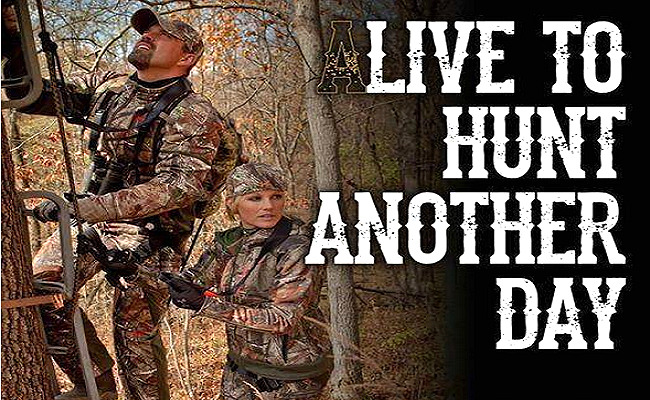The Backcountry Press
The country's premier daily hunting, fishing & outdoor news in the USA, Canada and more. Read whats happening in your neck of the woods & beyond. Choose your language above and read our news in English, Deutsche, Espanol, Francese, Irish or Italiano
The Backcountry Outdoor News reports the latest hunting and, fishing news along with fishing derbies and tournaments
from:
| ||||||
| ||||||
|
HUNTING NEWS CATEGORIES
© 2010 Backcountry Press Outdoor News - All Rights Reserved Website Design by:
Connect With Us
 | ||||
Hunters: Take the FREE Treestand Safety Course & Why You Should
Submitted by: Backcountry Press Outdoor News
Disclaimer: The views expressed on this site are that of the authors and not necessarily that of TBC Press
With more and more news on death and/or serious injuries regarding treestand accidents, The Backcountry Press wants to stress the importance of treestand safety. Take the FREE Treestand Safety Course from HUNTERcourse.com. It is The ONLY TMA approved online treestand safety course.
The FREE Treestand Safety Course Covers:
- Using a Fall Arrest System
- Fixed / Hang-On Stands
- Climbing Stands
- Ladder Stands
- Using a Haul Line
- If You Fall
One of the most popular pieces of equipment used by deer hunters is a tree stand. Tree stands can be dangerous if they are used incorrectly or carelessly. Nationally, one in three hunting injuries involves a tree stand.
Falls from tree stands can be caused by a variety of factors, including a weakness in the stand's structure and incorrect installation.
Hunters also may fall asleep while on their stands. Tree stands can also be a factor in other hunting accidents, including injury from accidental firing of a loaded firearm while the hunter is climbing to the stand. To help prevent these accidents, follow these safety precautions:
Tree Stand Safety Tips
- Never carry equipment with you while climbing. Use a haul line to raise or lower your gear. Make sure guns are unloaded and broadheads are covered prior to raising or lowering firearms or bows with a haul line.
- Since most accidents occur when hunters are climbing up or down a tree, always use a climbing belt. Always use a safety belt or harness when hunting from elevated tree stands. Study manufacturers recommendations before using any equipment. Never use a rope to replace a safety belt.
- Check permanent tree stands every year before hunting from them, and replace any worn or weak lumber.
- Read, understand and follow the factory recommended practices and procedures when installing commercial stands. Inspect portable stands for loose nuts and bolts each time they are used.
- Choose only healthy, living trees when using climbing devices. Rough-barked trees such as oak are best. Do not use a tree that is rotten or has dead limbs.
- Never put all your weight on a single branch. Keep at least one hand and one foot on a secure place when reaching for the next hold.
- Climb higher than the stand and step down onto it. Climbing up onto it can dislodge it.
- Wear boots with non-skid soles, because steps or platforms can be slippery in rain, sleet or snow.
- Tell a dependable person where you're hunting and when you plan on returning. Map your whereabouts and leave a note at camp, at home or in your car so that you can be found.
- Don't fall asleep. This is a common cause of accidents. If you get drowsy, move your arms rapidly until you feel alert.
- Never wear a ring in any climbing situation. Rings can catch on tree limbs and equipment.
- As a precautionary measure, remove all logs, upturned and cutoff saplings, rocks and other obstructions on the ground below the tree stand.
- Use updated equipment. When used properly, newer tree stand equipment is solid, safe and secure. Older models of safety belts offer some protection, but newer safety harnesses offer more protection.
- Carry a whistle to call for help and carry a first aid kit, flashlight and cellular telephone in a fanny pack.
For more Tips and information on treestands and other Hunter Safety issues visit: Hunter-Safety














